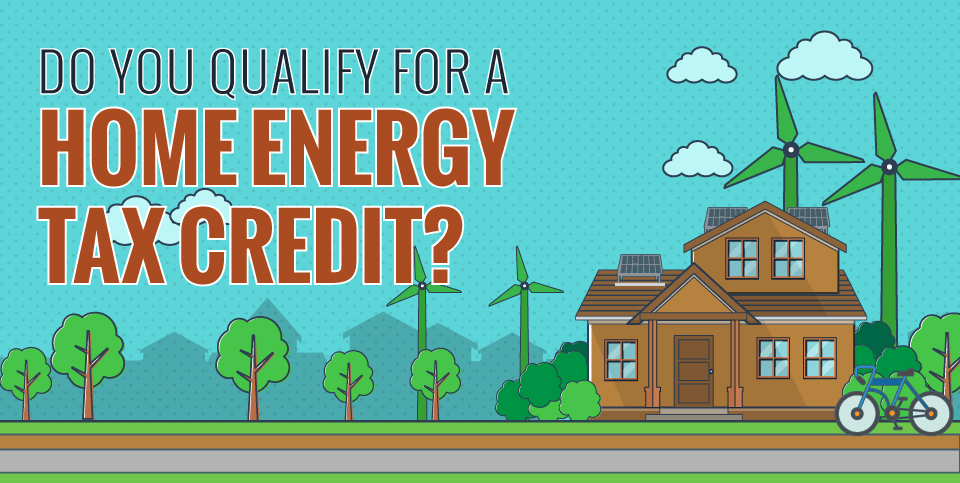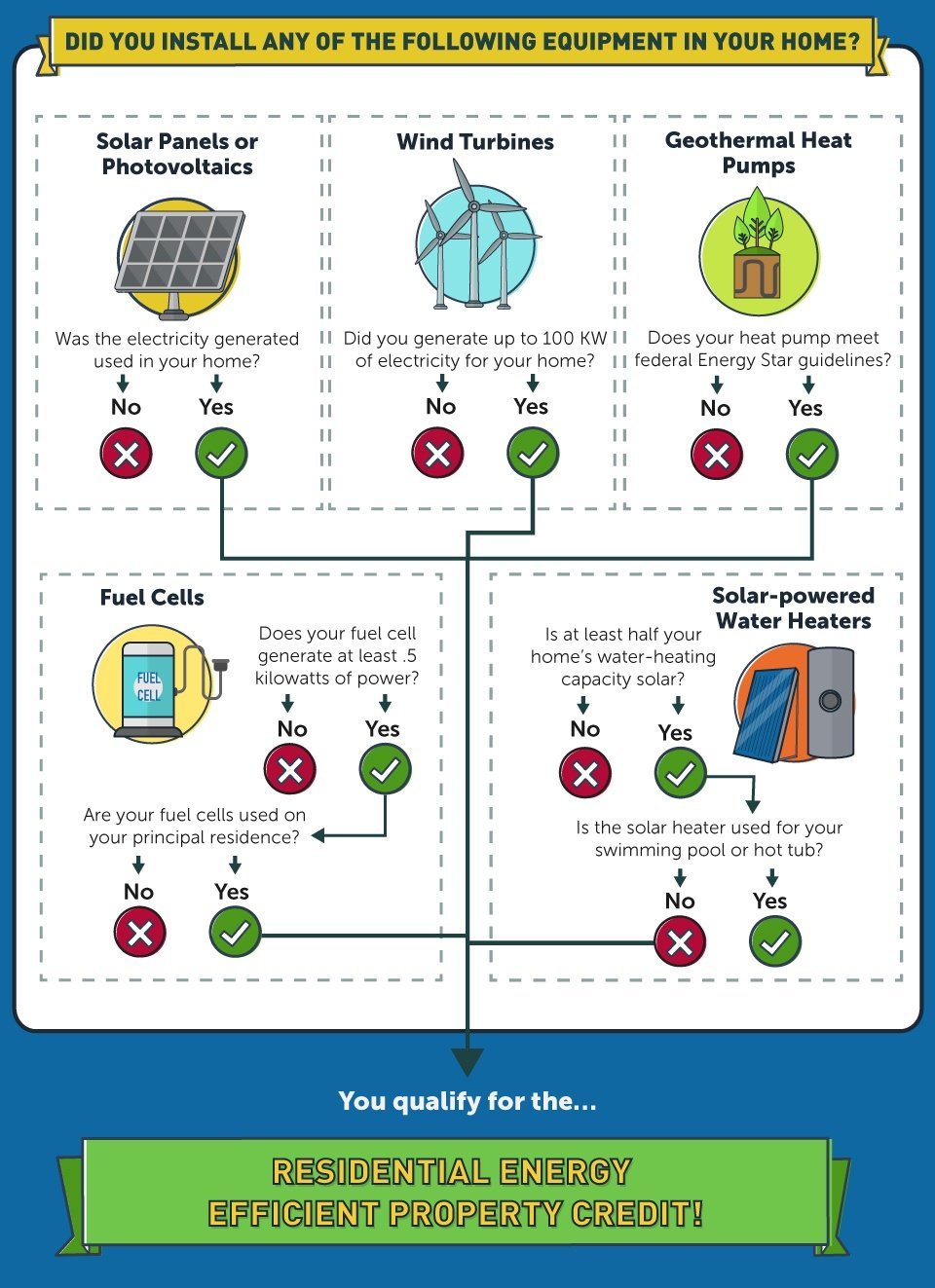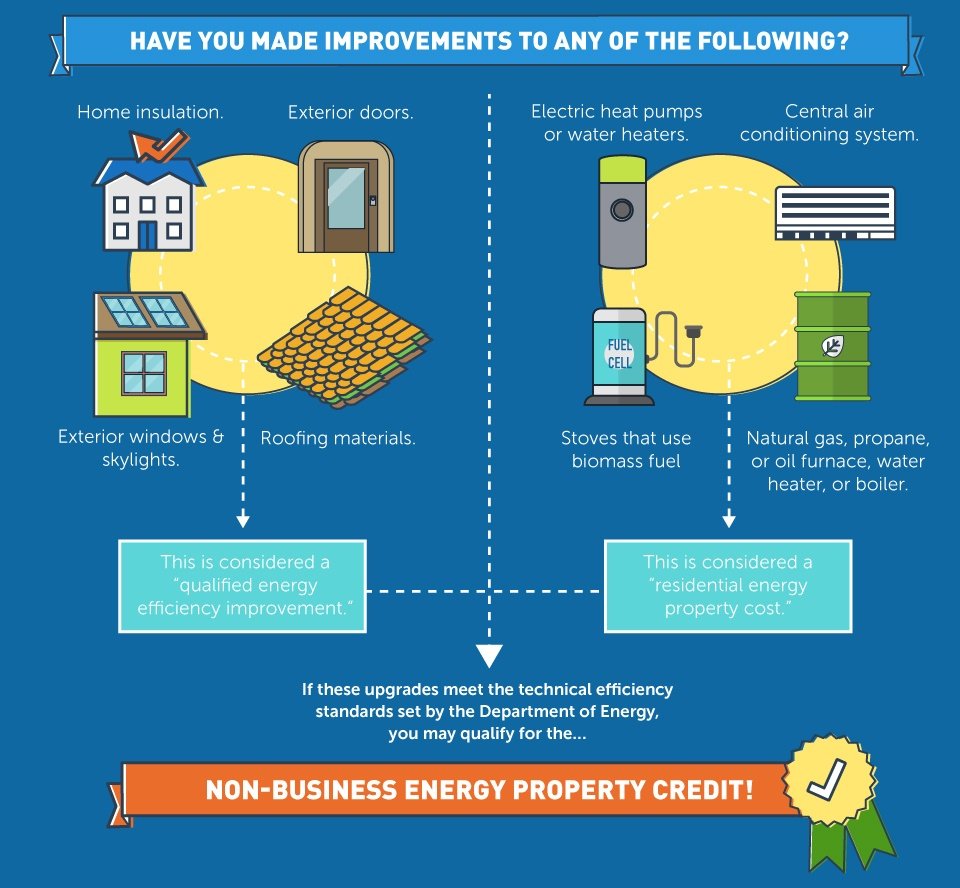Do You Qualify for A Home Energy Tax Credit?

Every year the IRS and federal government offer a number of tax credits to homeowners based on how they generate and use energy in their home. The more efficient your home is, the bigger the credit you’ll receive.
These credits change from year to year as the federal government revises and improves its energy efficiency initiatives. As a homeowner, you need to keep an eye on what tax credits are available in order to receive the maximum refund you are eligible for when filing your tax return.
Fortunately for the 2015 tax season, Homeselfe has you covered!
Large Home Energy Tax Credits
There are two types of major credits available for homeowners: the Residential Energy Efficient Property Credit and the Nonbusiness Energy Property Credit. These credits are offered based on the type and scale of energy efficiency upgrades added to your home.
Residential Energy Efficient Property Tax Credit
The Residential Energy Efficient Property Tax Credit is designed to reward homeowners who use renewable energy to help power their home. These include…
- Geothermal Heat Pumps: Geothermal energy is a constant, reliable, and renewable source of power. However, getting to it can be expensive. This tax credit is intended to help take the bite out of the purchase.
- Small Wind Turbines (Residential): While not applicable to every region, wind power can be quite resourceful. Small wind turbines can generate power for an individual’s home using clean, emissions-free energy.
- Solar Energy Panels: Currently one of the most popular options for energy efficiency, solar power is endlessly renewable.
- Solar-powered Water Heaters: While using photovoltaic panels to capture energy is the most popular form of solar energy efficiency, using solar energy to power large appliances such as your water heater will also earn you a tax credit.
- Fuel Cells: Hydrogen looks increasingly likely to be a powerful source of energy in the years to come, and fuel cells are a key component for storing the energy it produces.
Those who qualify receive 30% of the cost of equipment, including installation, with no upper limit. If your tax credit is more than you owe, it carries over to the next year.
Most of these tax credits have a minimum energy efficiency requirement, and some are only available on primary residences. To see if you meet the requirements, check out this chart:

Nonbusiness Energy Property Credit
The Nonbusiness Energy Property Tax Credit, on the other hand, rewards homeowners for installing materials and equipment that meet energy efficiency standards set by the Department of Energy. These credits only apply to existing homes that serve as your main residence. New homes cannot take advantage.
There are two categories of upgrades which determine the amount of credit available to you. The first category includes…
-
- Insulation: Insulation helps prevent wasted energy by keeping heat where it needs to be. Since it often wears out over time, you’ll need to replace insulation if you want to maximize your efficiency.
-
- Exterior Doors: Unlike walls, most doors don’t have a lot of insulation, so heat will often pass right through. Replacing your doors with ones that do have insulation makes enough improvement to qualify for a tax credit.
-
- Exterior Windows: Windows can let out a lot of energy, similar to doors. Skylights can also qualify for tax credits.
- Roofing: Energy-efficient roofs can help make sure your home isn’t wasting too much energy, like insulation.
Upgrades to these areas in your home are considered “qualified energy efficiency improvements.”
The second category includes…
-
- Electric Heat Pumps
-
- Electric Heat Pump Water Heaters
-
- Stoves That Use Biomass Fuel
-
- Central Air Condition Systems
-
- Natural Gas, Propane, or Oil Furnace
- Natural Gas, Propane, or Oil Water Heater or Boiler
…are known as is a “qualified energy efficiency improvement.” Here’s the breakdown:

To find out if an item or upgrade meets the Department of Energy standards, you can contact the manufacturer.
The tax credit itself includes 10% of the cost of qualified energy efficiency improvements, and 100% of residential energy property costs. There are a number of limits on both categories, including…
-
- A maximum of $500 credit for all years combined, 2006 to present.
-
- Only up to $200 can be used for windows.
-
- Only up to $150 can be used for a furnace or boiler.
- Only up to $300 can be used for any other single residential energy property cost.
Both the Residential Energy Efficiency Property Credit and the Nonbusiness Energy Property Credit are slated to expire at the end of 2016, but may be renewed by the government.
Other Home Energy Tax Credits
Tax credits are also offered on individual energy efficient products, such as ENERGY STAR certified appliances. These include…
-
- Electric water heaters
-
- Gas water heaters
- Windows, doors, and skylights
… as well as insulation and air seal materials that pass energy efficiency standards. All of these tax credits can be claimed by using IRS Form 5955, Residential Energy Credits. To see the full range of home energy tax credits and requirements, check out our full infographic, “Do You Qualify for A Home Energy Tax Credit?” below!
If you have yet to make any upgrades to your home but want to plan ahead to take advantage of tax returns in 2016, take a Benefyd and identify the areas in your home that need improvement most. For more information about home energy efficiency and other ways to save, keep coming back to the Benefyd blog.

Note: The information on this page is for informational purposes only, and should not be treated as a substitute for advice from the IRS or a tax professional.


